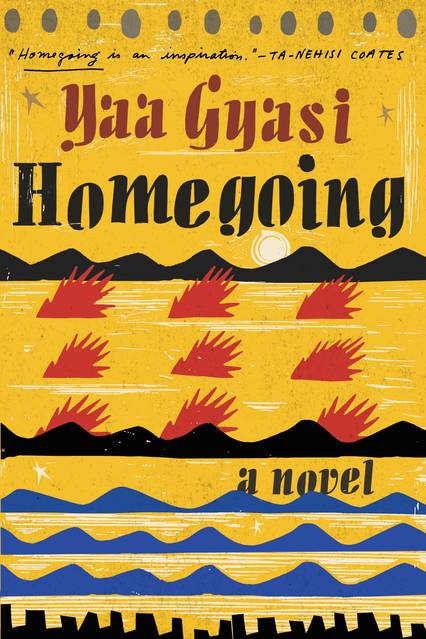The village is invaded by a warring tribe and 15-year-old Esi is captured and sent to Cape Coast Castle, where British slave traders and government officials live in opulence, and where hundreds of captured Africans subsist in a dungeon, before being forced onto a ship and taken across the Atlantic to be sold to the highest bidder. In America, according to one African slave trader, the brutality is far beyond anything in Ghana — “unfathomable,” as one character puts it.
Esi’s half-sister Effia experiences a very different fate. Married to a British man, she goes to live in the luxurious upstairs quarters of the Cape Coast Castle, along with other local women who have married white men. Soon after her arrival, Effia hears moans coming through cracks in the floor. She’s disturbed by the sounds and asks her new husband about it. Effia will never know that her own half-sister is one of those people trapped in the mud-walled, windowless, feces-drenched dungeon. Soon, Esi will be forced into heinous conditions on a slave ship across the Atlantic, but not before she is raped by one of the white jailers — a sign of the atrocities to come.
“What’s below?” she [Effia] asked James, and the mangled Fante word that came back to her was “cargo.”
With that one word, cargo, humanity is brutally split in two. It’s a legacy that continues to haunt America into the 21st century. As Sarah Jaffe writes in her new book Necessary Trouble: Americans in Revolt:
Modern capitalism was born out of and then fueled by slave labor and then by coal, more coal, and oil. Indeed, the sweat and strain of enslaved people served as substitute for fossil fuels in the American South, part of the reason that the South industrialized so much later than the North. Black people, wrenched from their birthplaces to labor at the end of a whip, were a reliable power source for hundreds of years before slavery was eliminated — and in England, when it was eliminated reparations were paid not to former slaves but to the people who owned them. That money was pumped back into the coal-fired plants that made the industrial revolution possible.
“Theirs was the kind of life that did not guarantee living,” says Ness, the daughter of Esi, now a slave on a Southern plantation, whip-scarred by an owner she calls only The Devil.
Gyasi neatly crams 300 years of history into Homegoing, a feat achieved by giving each character just one chapter. The descendants of Esi and Effia grapple with major developments in Africa and America. For Ness’s son Kojo, who lives in Baltimore as a free man with his wife Anna and children, it’s the Fugitive Slave Act, which tears his family apart. As he watches his daughter Beulah sleep, he wonders when the nightmare, for black Americans, will end.
Maybe this was where it started, Jo thought. Maybe Beulah was seeing something more clearly on the nights she had these dreams, a little black child fighting in her sleep against an opponent she couldn’t name come morning, because in the light that opponent just looked like the world around her. Intangible evil. Unspeakable unfairness. Beulah ran in her sleep, ran like she’d stolen something, when really she had done nothing other than expect the peace, the clarity, that came with dreaming. Yes, Jo thought, this is where it started, but when, where, did it end?
In the chapter that follows, H, the son of Kojo and Anna, is imprisoned for not paying a $10 fine, forced to work in coal mines for free as part of a prison chain gang. H somehow survives, marries, and has children with the woman he loves, and becomes a union activist. In another chapter, his daughter Willie migrates to New York where she and her husband, who passes white, are torn apart by strict racial lines and white privilege. Willie’s son Sonny, an activist and NAACP worker, gives up on the fight and turns to heroin as a solace. His son Marcus, a graduate student at Stanford, closes out the book with a return to the Cape Coast Castle.
The African history in the novel is just as powerful, holding to the fire the conscious role of Europeans in creating a war-torn and broken African continent. As in this passage:
James knew the British had been incited tribal wars for years, knowing that whatever captives were taken from these wars would be sold to them for trade. His mother always said that the Gold Coast was like a pot of groundnut soup. Her people, the Asantes, were the broth, and his father’s people, the Fantes, were the groundnuts, and the many other nations that began at the edge of the Atlantic and moved up through the bushland into the North made up the meat and pepper and vegetables. This pot was already full to the brim before the white men came and added fire. Now it was all the Gold Coast people could do to keep from boiling over again and again and again.
Back in America, as we’ve seen this year with the deaths of Alton Sterling in Baton Rouge, Philando Castile in Minnesota and five police officers in Dallas, race still means something in America. The use of race as a implement of power runs deep, long, and wide.



